Power BI Blog: Power BI Desktop with Files in OneDrive and SharePoint
3 August 2023
Welcome back to this week’s edition of the Power BI blog series. This week, we look at the wonderful world of Power BI Desktop, OneDrive and SharePoint.
Power BI Desktop has released the Preview of new Open, Save and Share options when working with files in OneDrive and SharePoint document libraries.
Many report creators save their Power BI files to OneDrive and SharePoint during report creation. These new capabilities help authors with file versioning, collaborating with other authors and ensuring they always have a backup of their files in the cloud.
You may start by enabling the Preview by checking the ‘Save to OneDrive and SharePoint’ and ‘Share to OneDrive and SharePoint options’ in the Options -> Preview Features. Note, if you have many recent files, there is a known bug affecting the performance. Microsoft is aware and has stated that this will be fixed next month and thus recommend you wait to turn this feature on.
When enabled, the next time you save a new file in Power BI Desktop, you’ll see OneDrive and SharePoint folders you’ve recently used, in addition to the local folders you’ve used recently.
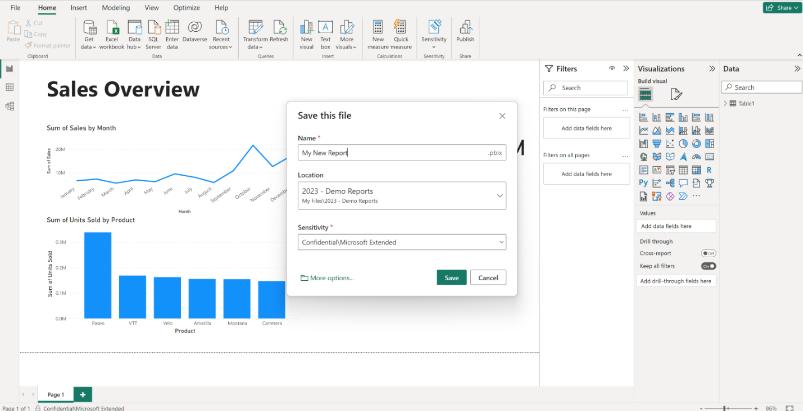
If you don’t see the folder you need, select the ‘More options…’ button which opens the new ‘Save As experience’ that lists the OneDrive and SharePoint locations you have access to, and lets you navigate and create new folders. You may also ‘Browse this device’ to save to a local folder.
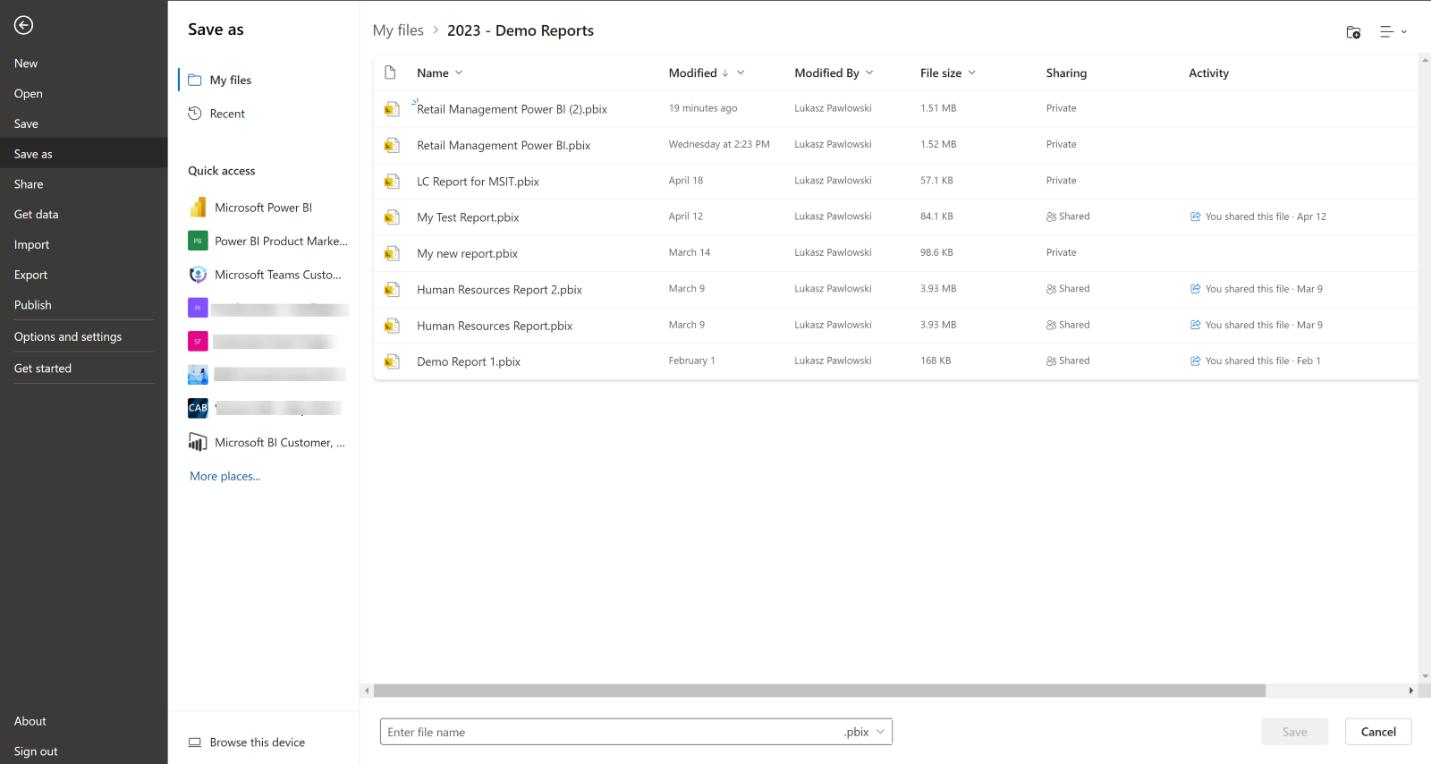
When you press Save, the file will be uploaded to the location you chose. You can press ‘Upload later’ to keep working and the file will be uploaded when you close Power BI Desktop.
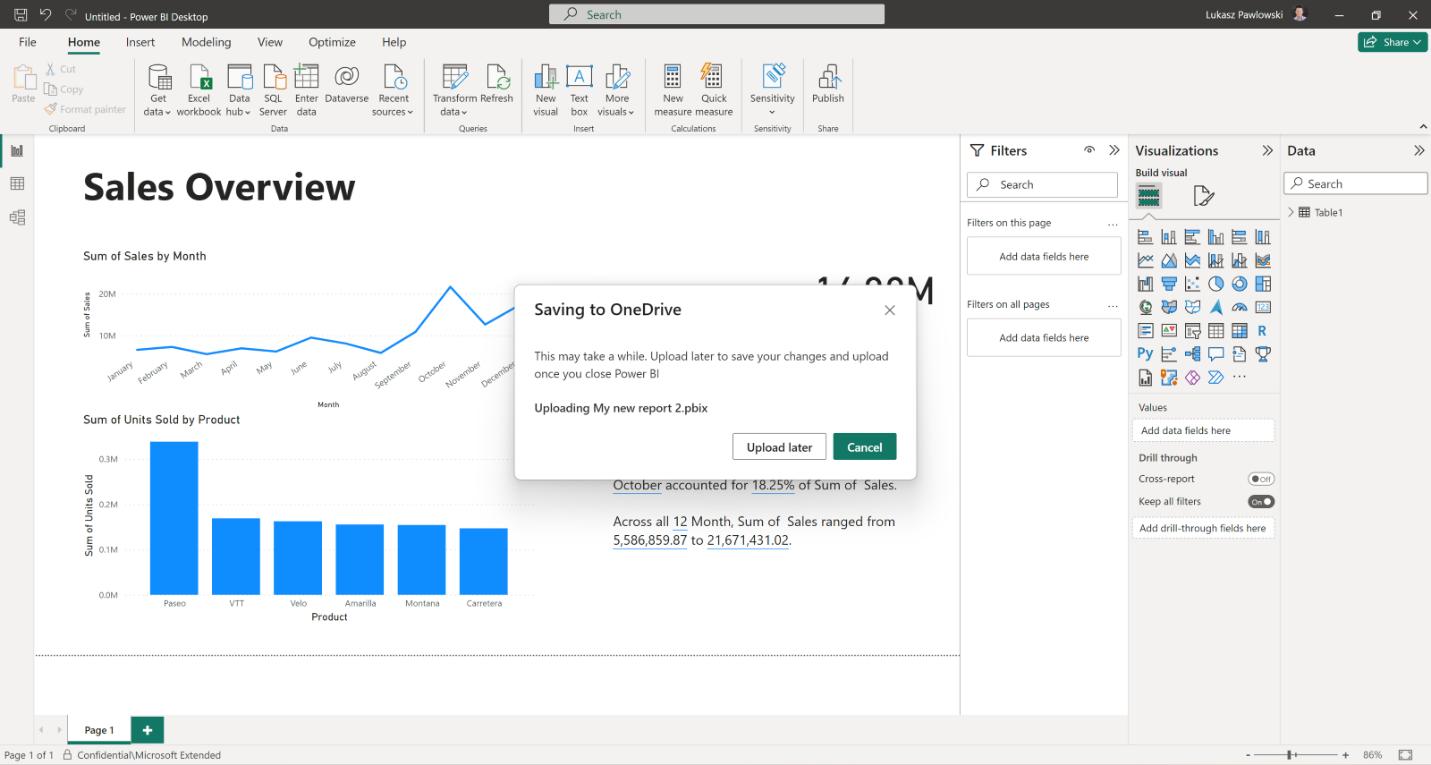
Next time you open Power BI Desktop, you’ll be able to open the file directly from OneDrive and SharePoint document libraries. This downloads the file locally. This update does not add any collaborative editing of Power BI files.
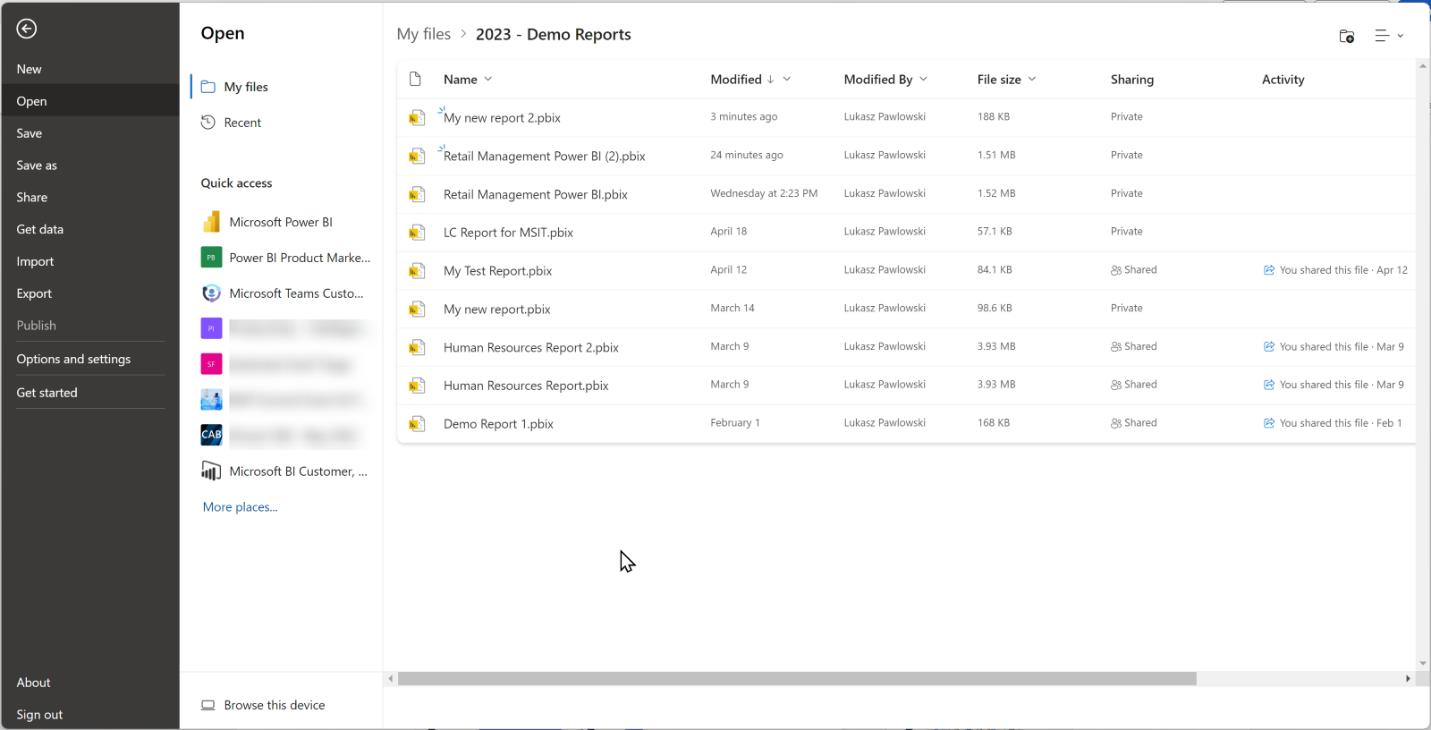
Finally, when you’re ready to share your work with a colleague, you can click the Share button at the top right-hand corner. If the file is a local file or a new file, you’ll be prompted to save it to OneDrive or SharePoint.
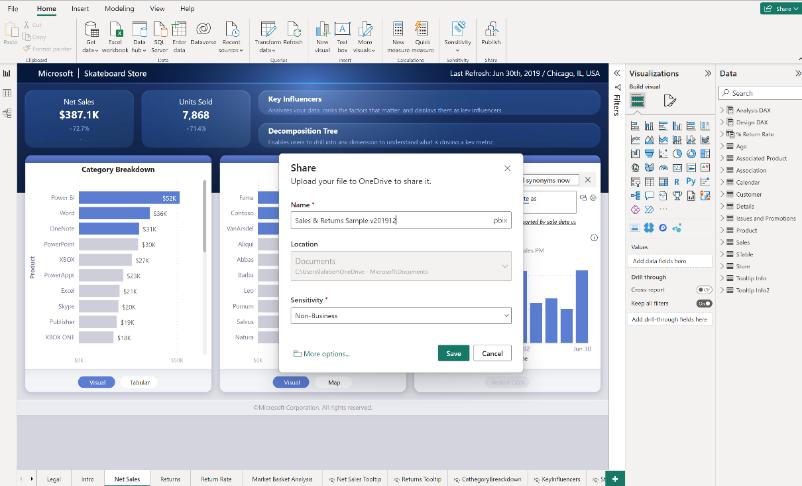
Then, you’ll be able to use standard SharePoint and OneDrive UI to get a shareable link or send it to the people who need it.
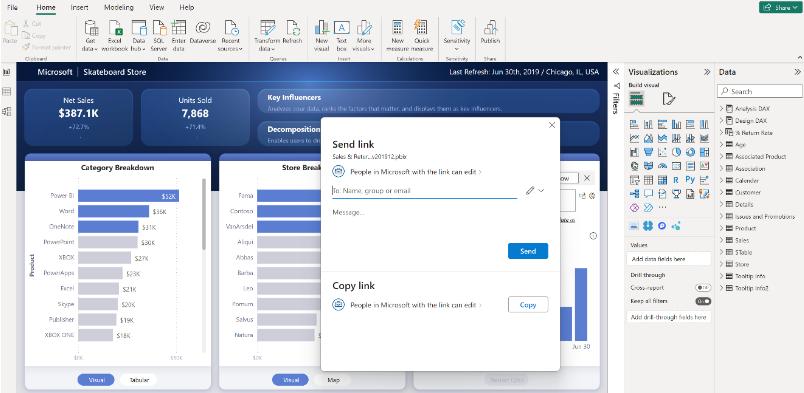
Sharing through OneDrive and SharePoint is convenient for report authors and small teams. For larger organisations, it’s best to use the Publish option to share through the Power BI Service, where it’s easier to distribute, find and manage trusted reports.
Power BI administrators may turn off the ability to ‘share through OneDrive and SharePoint’ for users in their organisation in Power BI Desktop. Use the Power BI ‘admin portal’ to disable the ‘Users can share links to Power BI files stored in OneDrive and SharePoint through Power BI Desktop’ setting (catchy title).

When the setting is disabled, the Share button will be disabled for signed-in users. If the user has not signed in, they’ll need to sign in after pressing Share. If the Admin setting is disabled, the share option gets disabled. Users will still have the option to save to their OneDrive for Business or a SharePoint Document library, which many already do today by synchronising their local file system with OneDrive or manually uploading files.
These new open, save and share experiences work together with the recently announced view in OneDrive and SharePoint experience. Your Power BI Admin can enable the ‘Users can view Power BI items saved in OneDrive and SharePoint (Preview) tenant’ setting if necessary too.
As we have advocated for years, organisations need to build a single source of truth where everyone can find the most authoritative and up-to-date insights. Publishing to the Power BI Service and distributing through the Power BI app will assist with this process.
These new OneDrive and SharePoint capabilities complement existing processes by meeting the needs of authors, who often collaborate as a team before publishing official versions of reports through the Power BI Service.
It also helps organisations that are just starting out. They may have just a few people using Power BI who are already familiar with sharing content in OneDrive.
In the meantime, please remember we offer training in Power BI which you can find out more about here. If you wish to catch up on past articles, you can find all of our past Power BI blogs here.

